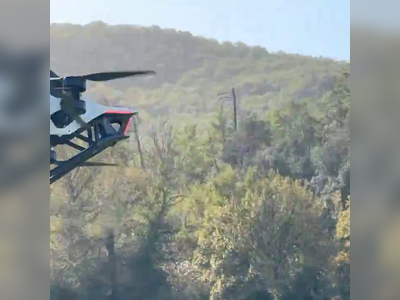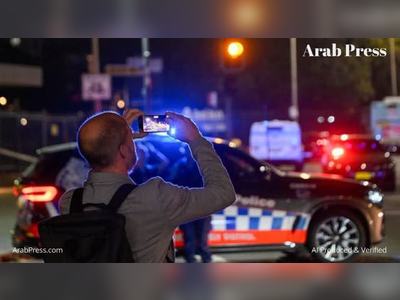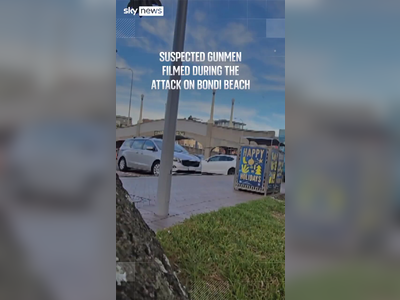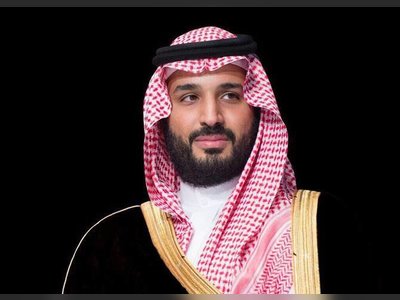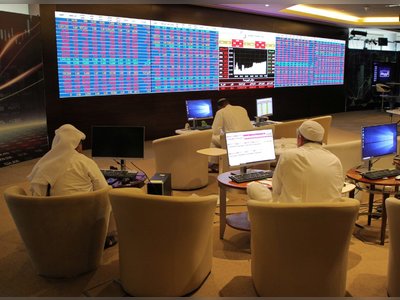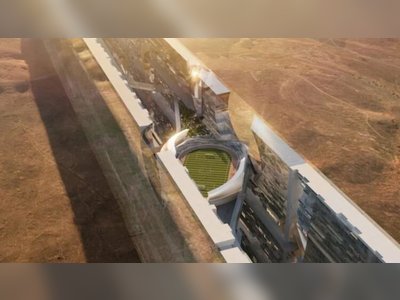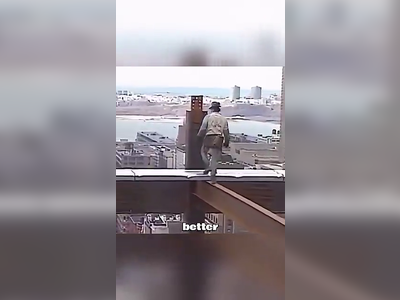Trump Shares Controversial AI Video Showcasing Reconstructed Gaza
The US President's video presents an idealized vision of Gaza, attracting widespread attention and criticism.
US President Donald Trump recently stirred significant discussion on social media after posting an AI-generated video featuring a reconstructed Gaza Strip on his social media platform, Truth Social.
The video has attracted millions of views and presents a vision of Gaza that includes sunny beaches, luxurious buildings themed around Trump, and representations of a transformed landscape following 15 months of conflict.
Key figures in the video include Elon Musk, the CEO of Tesla and SpaceX, and Israeli Prime Minister Benjamin Netanyahu, who are depicted enjoying the newly imagined Gaza.
The visual content is accompanied by lyrics expressing a narrative of liberation and renewal: "Donald Trump will set you free, bringing the life for all to see, no more tunnels, no more fear, Trump Gaza is finally here." The portrayal includes scenes of local culture, featuring individuals belly dancing and interacting with tourists, aligning with a vision of vibrant social life in a reimagined Gaza.
President Trump has recently expressed a desire to take over Gaza, suggesting plans to turn it into what he termed the "Riviera of the Middle East." He announced intentions to enhance the area with upscale resorts and skyscrapers, amid talks of a ceasefire reached between Israel and Hamas.
In a press statement, Trump asserted, "The U.S. will take over the Gaza Strip, and we will do a job with it, too.
We'll own it and be responsible for dismantling all of the dangerous unexploded bombs and other weapons on the site..." He further urged neighboring countries, particularly Jordan and Egypt, to aid in welcoming displaced Gazans due to the extensive conflict.
Responses to Trump’s video and plans have been polarized.
Pro-Palestinian activists have vocalized opposition, asserting that Gaza is not for sale, and expressing concerns regarding the ongoing humanitarian crisis.
Statements from activists highlight issues of genocide, ethnic cleansing, and occupation associated with the long-term conflict.
According to United Nations reports, the recent conflict resulted in the destruction of over 60,000 structures, with approximately 20,000 more severely damaged, leaving many in dire need of aid.
The video, while aimed at demonstrating a hopeful vision of recovery and prosperity, has prompted significant backlash focusing on the real-life ramifications of the enduring conflict.
The video has attracted millions of views and presents a vision of Gaza that includes sunny beaches, luxurious buildings themed around Trump, and representations of a transformed landscape following 15 months of conflict.
Key figures in the video include Elon Musk, the CEO of Tesla and SpaceX, and Israeli Prime Minister Benjamin Netanyahu, who are depicted enjoying the newly imagined Gaza.
The visual content is accompanied by lyrics expressing a narrative of liberation and renewal: "Donald Trump will set you free, bringing the life for all to see, no more tunnels, no more fear, Trump Gaza is finally here." The portrayal includes scenes of local culture, featuring individuals belly dancing and interacting with tourists, aligning with a vision of vibrant social life in a reimagined Gaza.
President Trump has recently expressed a desire to take over Gaza, suggesting plans to turn it into what he termed the "Riviera of the Middle East." He announced intentions to enhance the area with upscale resorts and skyscrapers, amid talks of a ceasefire reached between Israel and Hamas.
In a press statement, Trump asserted, "The U.S. will take over the Gaza Strip, and we will do a job with it, too.
We'll own it and be responsible for dismantling all of the dangerous unexploded bombs and other weapons on the site..." He further urged neighboring countries, particularly Jordan and Egypt, to aid in welcoming displaced Gazans due to the extensive conflict.
Responses to Trump’s video and plans have been polarized.
Pro-Palestinian activists have vocalized opposition, asserting that Gaza is not for sale, and expressing concerns regarding the ongoing humanitarian crisis.
Statements from activists highlight issues of genocide, ethnic cleansing, and occupation associated with the long-term conflict.
According to United Nations reports, the recent conflict resulted in the destruction of over 60,000 structures, with approximately 20,000 more severely damaged, leaving many in dire need of aid.
The video, while aimed at demonstrating a hopeful vision of recovery and prosperity, has prompted significant backlash focusing on the real-life ramifications of the enduring conflict.
